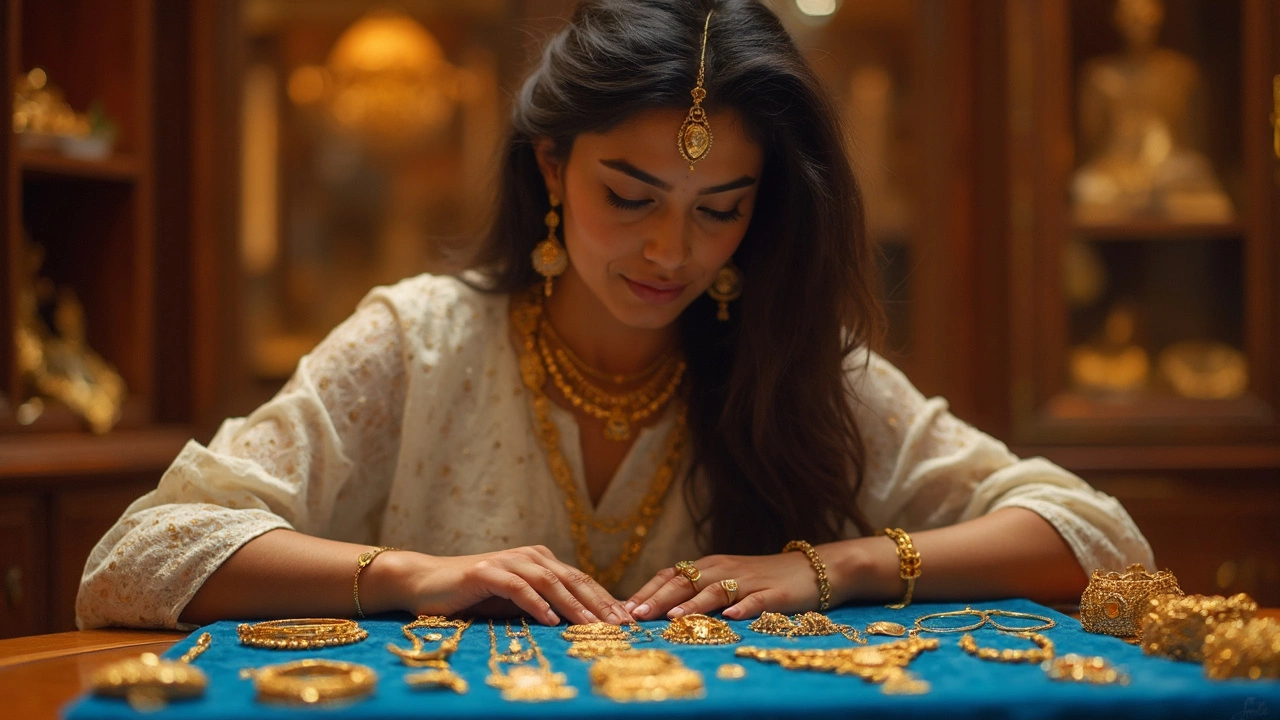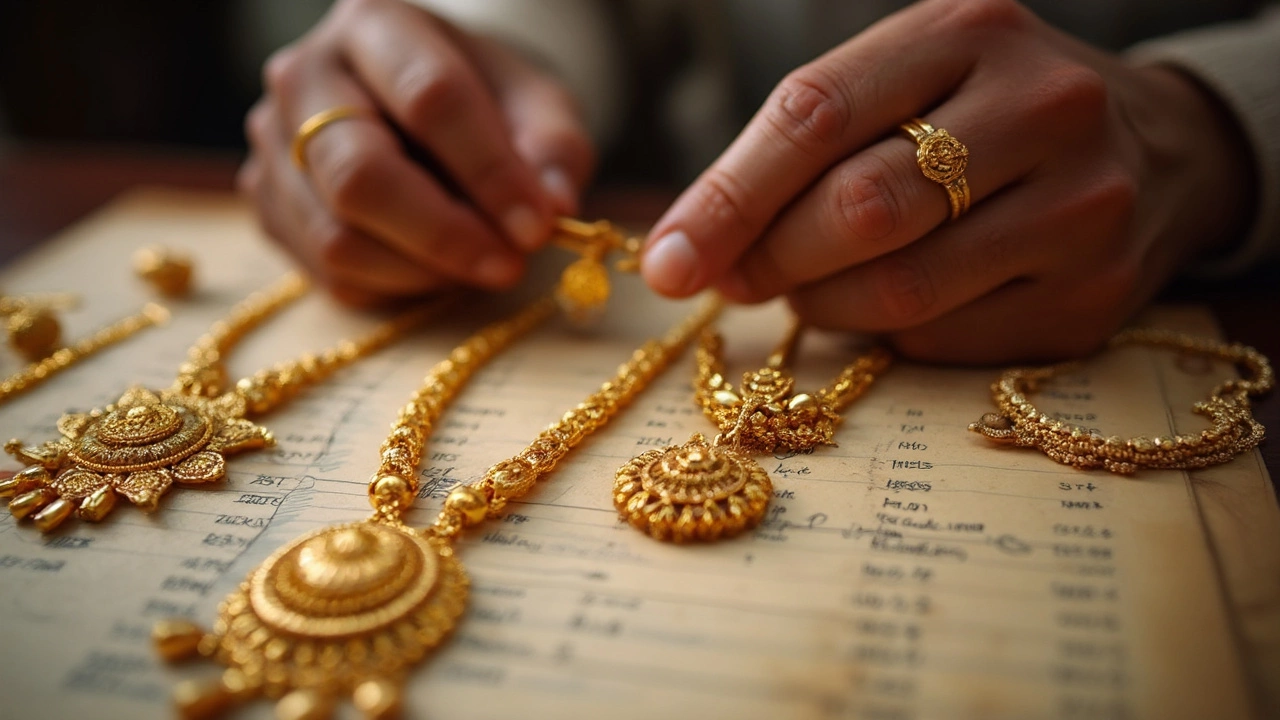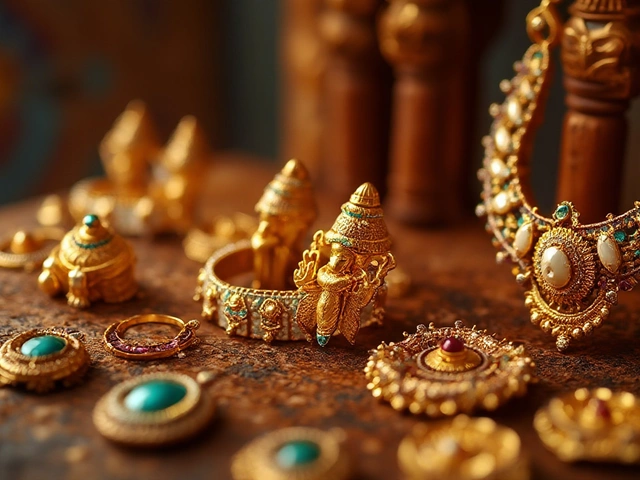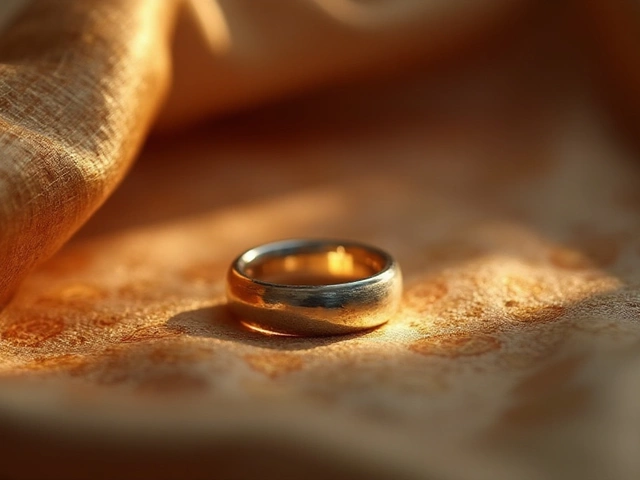
Ever seen someone spend thousands on a gold bracelet, then try selling it later—only to find it's worth a fraction of the price? That's a harsh lesson in how brand, design, and timing all mess with jewelry value. Not every gold piece is a winner for your wallet.
If you want jewelry that's not just gorgeous but also holds up when you resell, you need to look past just the shine. It all comes down to which brands actually have a reputation for value retention. Think of it like buying a car—some lose value the second you drive them home, while others barely budge even years later.
Names like Cartier and Van Cleef & Arpels almost always lead the pack when it comes to investment-worthy gold jewelry. But even the "big dogs" aren't immune to style fads or overhyped collabs. Want a smart buy? Focus on classic designs, the brand's legacy, and how easy it is to authenticate the piece. You don't want to be stuck with a gorgeous necklace that no one can confirm is original.
- The Truth About Jewelry and Resale Value
- Brands That Stand Out for Gold Jewelry
- What Actually Impacts Value Retention
- How to Make Smart Gold Jewelry Investments
The Truth About Jewelry and Resale Value
Buying gold jewelry feels like a smart move—it's shiny, valuable, and it's got that "it will always be worth something" vibe. But here’s where most people get tripped up: not all gold jewelry holds its value the same way when you want to sell it later. The resale market can be pretty brutal, even for fancy pieces with big price tags. Some brands and styles tank in value, while others actually hold steady or sometimes even get pricier as years go by.
Here’s a shocker: most gold jewelry sold in retail stores loses between 20% to 60% of its value as soon as it leaves the store. That’s because you pay for things like retail markup, sales tax, packaging, and even branding hype. The gold jewelry itself—meaning the metal content—usually makes up just a chunk of what you paid.
So, what really makes value stick? Let’s break it down:
- Brand reputation: If everyone knows the brand, or it has a cult following, it’s easier to resell at a good price.
- Condition of the piece: Scratches, missing stones, or worn clasps kill the value fast.
- Original paperwork and packaging: Having the original box and certificate seriously boosts what people are willing to pay.
- Design and rarity: Limited editions, classic pieces, or iconic styles always do better at resale.
Just to lay it all out, here’s a real-world look at resale value ranges by category:
| Type of Jewelry | Average Resale Value (% of Retail Price) |
|---|---|
| Unbranded Gold Jewelry | 20% - 40% |
| Mid-Tier Designer Brands | 35% - 55% |
| Top Luxury Brands (e.g., Cartier, Van Cleef & Arpels) | 60% - 90% |
If you ever wondered why folks are obsessed with keeping receipts or hanging onto boxes, this is why. The secondhand market wants proof and pristine condition. Want your gold pieces to really perform as investments? Pay attention to these details—and the brand name stamped on your clasp.
Brands That Stand Out for Gold Jewelry
When you think about buying gold jewelry that actually holds its value, only a handful of brands are really in the conversation. Some names just have stronger resale, almost like a safety net for your money. None of these are random picks. You see the same handful again and again at top auction houses and among serious collectors.
Here's the no-nonsense list for folks who want the best shot at value retention:
- Cartier: This one's pretty much the gold standard (no pun intended). Items like the Love bracelet or Trinity ring keep showing up online and selling for strong prices—sometimes almost the full retail price if they're in great shape. These pieces are super easy to recognize and authenticate.
- Van Cleef & Arpels: Their Alhambra collection is one of the hottest tickets in resale. Demand rarely dips, especially for classic gold or vintage pieces. Collectors love the history and craftsmanship behind the brand.
- Bulgari: Look out for the B.Zero1 and Serpenti lines in particular. Bulgari isn’t all about flashy gems—its plain gold designs have solid staying power too.
- Tiffany & Co.: Maybe most famous for silver, but classic gold pieces and anything from the Elsa Peretti line tend to sell well. Bonus: the blue box is iconic, which somehow adds value.
- Hermès: Not as mainstream in jewelry, but certain gold designs hit hard in resale—especially the Collier de Chien bracelet.
Take a look at how much of the original price you could expect back if you ever decide to sell first-tier gold jewelry from these brands:
| Brand | Signature Piece | Avg. Resale Value vs. Retail (%) |
|---|---|---|
| Cartier | Love Bracelet | 70–90% |
| Van Cleef & Arpels | Alhambra Necklace | 65–85% |
| Bulgari | B.Zero1 Ring | 60–75% |
| Tiffany & Co. | Elsa Peretti Bone Cuff | 60–80% |
| Hermès | Collier de Chien Bracelet | 55–70% |
Just remember, resale values depend on things like condition, whether you have the original box and papers, and how “timeless” the design is. If it’s a short-term trend piece, don’t expect miracles at resale time, even if it has a big-name logo.

What Actually Impacts Value Retention
If you want your gold jewelry to keep its worth, you can't just go by looks alone. A few clear things separate the pieces that stay valuable from the ones that tank at resale.
- Brand Reputation: Some names—like Cartier, Tiffany & Co., and Van Cleef & Arpels—just ring bells with buyers. These brands are trusted for quality and iconic styles, and their gold pieces almost always get higher resale offers.
- Craftsmanship and Materials: The better the craftsmanship, the more cash you can ask for later. Most buyers want 18k gold at a minimum. Shaky clasps or sloppy finishing? That's when your piece starts losing value.
- Classic vs. Trendy: Timeless designs crush trends in the resale world. A Love Bracelet by Cartier stays popular year after year, while seasonal, limited-run collabs can quickly lose their shine when the hype dies down.
- Documentation: Original receipts, branded boxes, and certificates make it way easier to prove authenticity. Without those, even a genuine piece gets treated with suspicion—and lower offers.
- Market Demand: It’s basic, but true. Some pieces show up at auction over and over, and there’s always a market for them. (Think Alhambra by Van Cleef, or Cartier’s Trinity rings.)
Check out some numbers for resale value based on specific gold jewelry brands and designs:
| Brand | Iconic Model | Average Resale Value (% of retail) |
|---|---|---|
| Cartier | Love Bracelet | 75-85% |
| Van Cleef & Arpels | Vintage Alhambra Necklace | 70-80% |
| Tiffany & Co. | Return to Tiffany bracelet | 65-75% |
| Bvlgari | B.zero1 ring | 60-70% |
Condition also matters—a scratched or poorly maintained piece loses its edge, no matter how famous the maker. Regular cleaning and safe storage make a big difference over time.
If you're picking jewelry as an investment, focus on gold jewelry from trusted brands, stick to classic models, and keep every bit of original paperwork. That way, you’re set up for top dollar if you ever decide to sell or trade up.
How to Make Smart Gold Jewelry Investments
You don't need to be a gemologist to make a smart gold jewelry investment. But you do need to know the basics — and think more like a collector than a casual shopper. Here’s how to avoid common mistakes and actually get your money’s worth.
- Buy from iconic brands: Cartier, Van Cleef & Arpels, and Tiffany & Co are like Rolex in the watch world. Their pieces almost always hold value better than lesser-known names. Vintage Cartier Love Bracelets or VCA Alhambra necklaces, for example, can sometimes resell for over 85% of their retail price.
- Pick classic designs, not trends: It’s tempting to chase what’s hot, especially with influencer culture and celebrity collaborations. But the resale market stays loyal to timeless styles. If you stick with classics, you’ll have an easier time selling down the line.
- Stick to high-purity gold: 18K gold is standard among luxury houses; it strikes a balance between durability and purity. Lower karats (like 14K) generally fetch less on the second-hand market, even if the design looks similar.
- Save all documentation: Boxes, receipts, and certificates can boost resale prices by up to 20%. Buyers want proof, especially for branded items.
- Check for limited editions: Some brands do short runs of particular pieces. These can become especially sought after — think of the Tiffany & Co Schlumberger collection.
If you’re after serious gold jewelry investment, do some homework on recent auction results. Christie's reported that from 2020 to 2024, resold Cartier pieces averaged 80–90% of their original retail value, while lesser-known designer brands typically saw closer to 40–60%.
| Brand | Typical Gold Purity | Resale Value (% of Retail) | Most Resilient Design |
|---|---|---|---|
| Cartier | 18K | 80–90% | Love Bracelet |
| Van Cleef & Arpels | 18K | 75–85% | Alhambra Necklace |
| Tiffany & Co | 18K | 70–85% | Elsa Peretti Bone Cuff |
| Bvlgari | 18K | 60–75% | B.Zero1 Ring |
Skip the impulse buys and spend time digging into what the resale market actually values. Your future self (and your wallet) will thank you.



